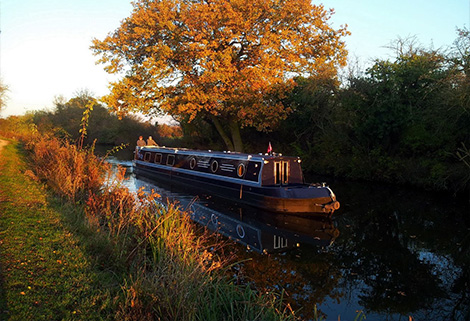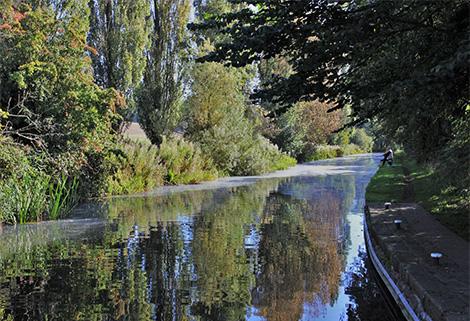iwa waterways for today
environmental benefits
IWA’s new Waterways for Today report highlights Environmental benefits of the waterways
Welcome back to this blog series from the Inland Waterways Association (IWA). Last time, we looked at the economic and financial benefits of the waterways as outlined in the IWA’s recently launched report – Waterways for Today – which highlights 12 Major Benefits of Britain’s Inland Waterways network. In the second in this series of four articles, we are looking at the key ENVIRONMENTAL benefits of the waterways.
These benefits are for both the natural and the built environment, highlighting how waterways reconnect disparate habitats and provide opportunities for biodiversity net gain. Heritage forms a large part of the environmental benefits of the waterways. With historic buildings and structures linked to their industrial past, waterways form a vast open-air heritage network, accessible to everyone and helping to bring history to life both now and in the future. The waterways can also play a vital role in sustainability through flood and drought mitigation and water transfer amongst other possible solutions to the impact of climate change.
Why are these blue-green corridors so vital for the environment?
Our waterways accommodate many protected species including water voles, otters, native crayfish and rare aquatic plants. The offside banks of canals and rivers offer largely undisturbed homes for wildlife to flourish. There are currently many different strategies being developed across the country to enhance and restore habitats located on and near waterways, these will vastly improve ecological connectivity between them.
Waterways heritage is holistic; it is not only the buildings and structures but also the landscape, traditions and culture that make the waterways such an important record of our industrial past. This built environment needs protecting. Most of the structures were built in the 18th and 19th centuries and without sufficient funding and sensitive restoration, they run the risk of falling into disrepair and disappearing forever.

Opportunities for funding and improvement
With the Environment Act 2021 now requiring most development schemes in England to deliver a biodiversity net gain of at least 10% and maintain it for at least 30 years, there is an opportunity for the waterways to become the recipients of offsite biodiversity credits where a developer cannot achieve the targets on their own site. For this to come about, local authorities and developers need to be made aware of just how important the waterways are to the improvement of the local environment. This is a key focus of activity for the IWA’s local branches.
IWA is also campaigning for the improvement of water quality across the inland waterways network. It is all very well encouraging biodiversity, but in order for it to be maintained, there needs to be a significant improvement in water quality, especially in urban areas and those areas where there are high levels of run off from cultivated fields.
Canals mitigating some of the impact of climate change
Waterways have the potential to address many impacts of climate change through mitigating flooding and droughts, transferring drinking water supplies and generating hydropower. They can also provide active travel and low-carbon transport routes. Sustainable fuel, increased numbers of electric charging points and other associated infrastructure will also help keep emissions from boats down. Moving goods by water is intrinsically more energy efficient than road or rail but more investment and incentives are required if this is ever going to become a viable option.
IWA is campaigning for the use of open waterways for water transfer as opposed to costly pipeline schemes. Using the open channels will help preserve heritage, improve biodiversity, attract wildlife and boost social and amenity values through recreational use.

Some statistics in the report include:
- 80% of people think local heritage makes their area a better place to live
- Hundreds of Conservation Areas include canals, which are then afforded greater protection from insensitive development
- Navigable inland waterways are home to over 100 Sites of Special Scientific Interest (SSSIs)
- More than 1000 waterway-based county wildlife sites are an integral part of the UK’s Nature Recovery Network
- The waterways network has a huge capacity to carry freight. One 500-tonne capacity barge can replace 25 lorries, which has a significant impact on keeping CO2 emissions down
- Research by the University of Manchester for the Canal & River Trust shows the presence of canal water in urban areas can cool Britain’s overheating cities by up to 1.6°C
To read the full IWA Waterways for Today report or to read the case studies related to the Environmental benefits of the waterways please visit: https://waterways.org.uk/waterwaysfortoday
Join us next time to look at the benefits that the waterways provide for LOCAL COMMUNITIES.
